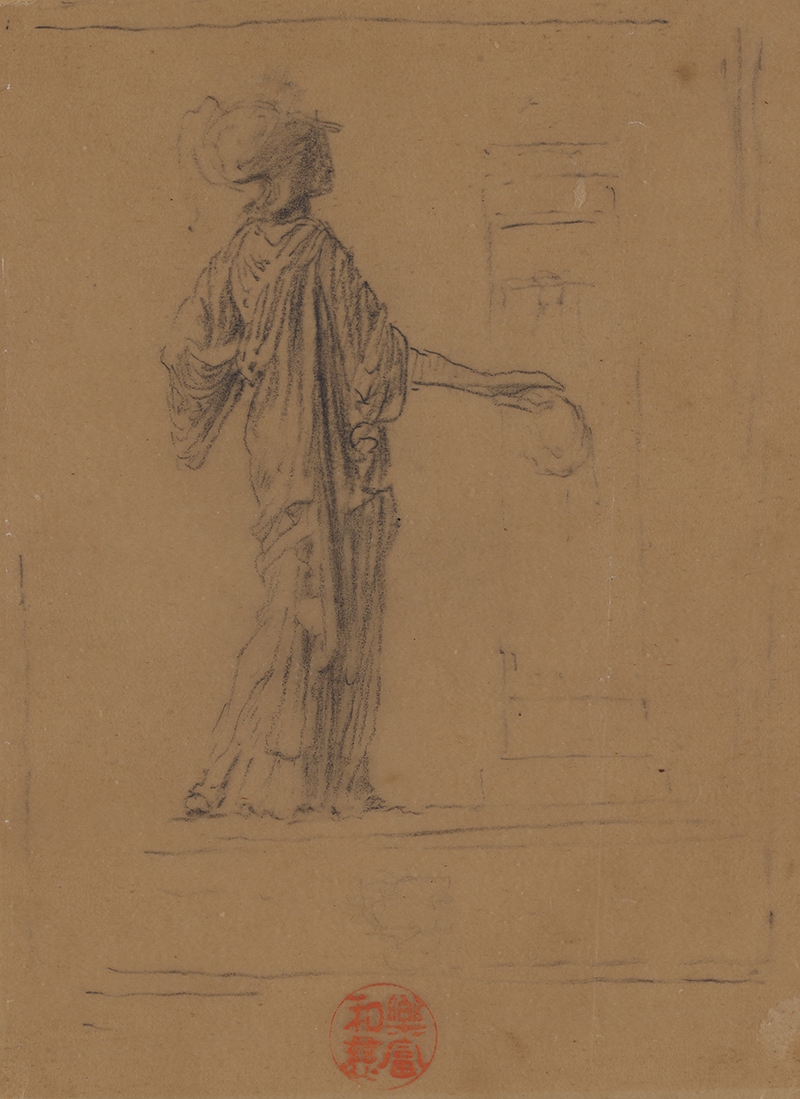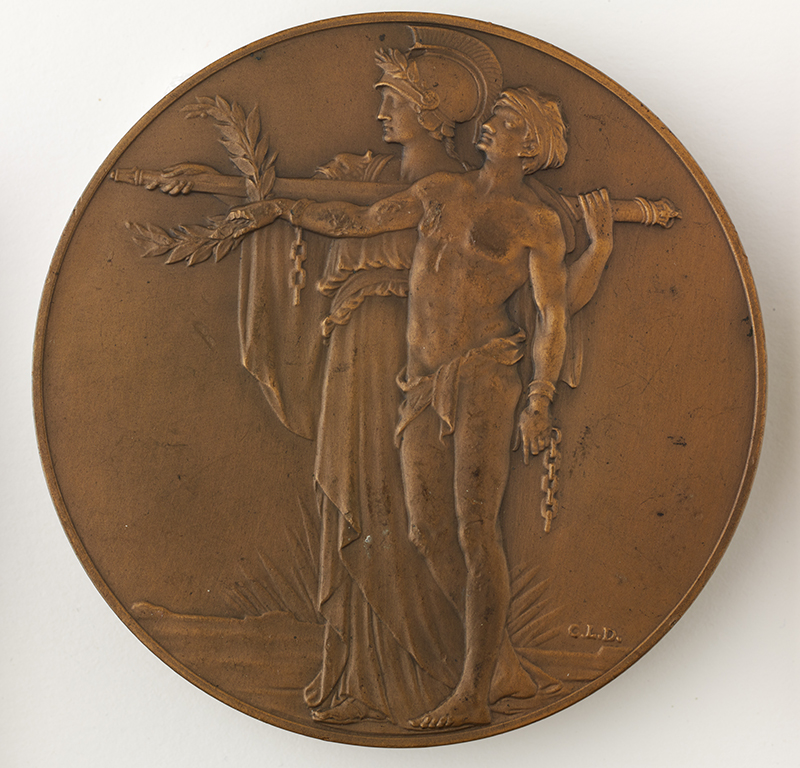"Empires of Liberty" to open in March
By Bowdoin College Museum of Art
Study for Pallas Athena, ca. 1893, pencil on tracing paper, by John LaFarge. Bowdoin College Museum of Art, Museum Purchase, Laura T. and John H. Halford Jr. Acquisition Fund, 2022.4.
On March 21, 2024, Empires of Liberty: Athena, America, and the Feminine Allegory of the State will open to audiences in the Museum’s Becker Gallery. This exhibition explores the emergence of female personifications of political power from antiquity through the Enlightenment to the mid-nineteenth century. Curated by Julia Katherine Fiori ’24, with support from Professor Jim Higginbotham (BCMA Curator for the Ancient Collection and Professor and Chair, Classics Department) and Cassandra Braun (BCMA Curator), the exhibition draws from the collections of the Bowdoin College Museum of Art and the Library’s George J. Mitchell Department of Special Collections & Archives. It features an array of artworks, with an emphasis on coins, medals, printed illustrations, posters, and other forms of mass media.
Fiori’s interest in this topic stemmed from coursework with Professor Higginbotham that examined the creation, implementation, and legacy of portraiture in the Greco-Roman world. She became particularly interested in the long history of employing female figures to embody city states and other localities in the ancient Mediterranean world. Fiori recalls, “I kept wondering why and how the identity of a nation came to be linked so heavily with female bodies, especially since these were patriarchal societies. I wanted to explore this idea further, so I submitted an application when I saw a call for proposals to curate one of the 2023–2024 Becker Gallery exhibitions. It’s exciting to explore these ideas as part of a team and in a format that allows me to combine my creative and academic sides. As a senior, I’m thrilled that I’ve been able to research a topic that deeply interests me in, and I can’t wait to show my family the exhibition when they come to my graduation in May.”
The first section of Empires of Liberty focuses on antiquity, when the earliest female allegories of political power emerged in the ancient Mediterranean. Here, statuary and coins combine to demonstrate how the Greek goddess Athena became an important and versatile symbol of democracy, militarism, and justice in Greece and other places in the ancient world, such as Pergamon and Rome. Rome, for instance, transformed Athena into the personification of Roma, who, in turn, served as a model for European nations and their colonies. The second section of the exhibition shifts to the Enlightenment, demonstrating how nations such as Great Britain, France, and, later, the United States appropriated the iconography of Athena and Roma to link their history with the values and perceived grandeur of the Greco-Roman past. Through this process of adoption and transformation, recognizable symbols such as Britannia, Marianne, and Columbia—the allegorical figures of Great Britain, France, and the United States, respectively—emerged.
 In researching collections at the BCMA and SC&A, Fiori noticed that depictions of Britannia and Columbia were especially well-represented. Playing to this strength, the final sections of the exhibition, which focus on the nineteenth and twentieth centuries, center depictions of Britannia and Columbia. By tracing the evolution of these figures, the artworks in these sections reveal the changing relationship between Europe and her colonies, the roles that nationalism played during local and global conflicts, and the complex and shifting attitudes about imperialism, race, and gender. These figures thus provide an avenue to understand contemporary attitudes towards historical events and social movements, such as slavery and abolition, immigration, and women’s rights.
In researching collections at the BCMA and SC&A, Fiori noticed that depictions of Britannia and Columbia were especially well-represented. Playing to this strength, the final sections of the exhibition, which focus on the nineteenth and twentieth centuries, center depictions of Britannia and Columbia. By tracing the evolution of these figures, the artworks in these sections reveal the changing relationship between Europe and her colonies, the roles that nationalism played during local and global conflicts, and the complex and shifting attitudes about imperialism, race, and gender. These figures thus provide an avenue to understand contemporary attitudes towards historical events and social movements, such as slavery and abolition, immigration, and women’s rights.
Although Empires of Liberty is structured chronologically, the exhibition encourages audiences to make thematic connections across time periods and cultural contexts—and in so doing, raise critical questions. For instance, why did the patriarchal power structures of the Western nation state manifest as female forms? How have these female personifications simultaneously defined and called into question Western values? The exhibition invites visitors to consider these questions and many others.
Julia Katherine Fiori ’24
and
Cassandra Braun, Curator, Bowdoin College Museum of Art
Illustration: On the Armistice Medal, ’18, 1918, bronze by Charles L. Doman. Bowdoin College Museum of Art, Gift of Mr. and Mrs. Mark M. Salton, 1978.32.22.a